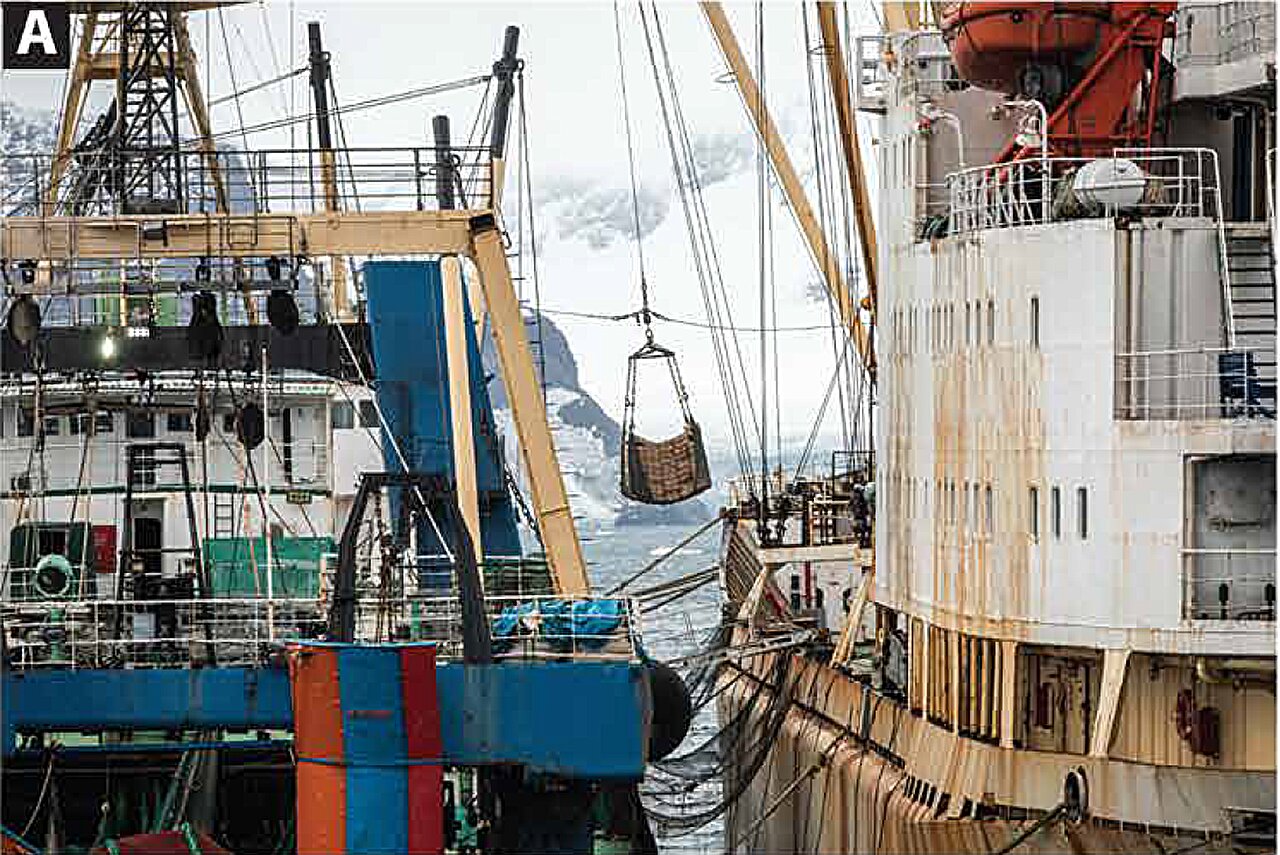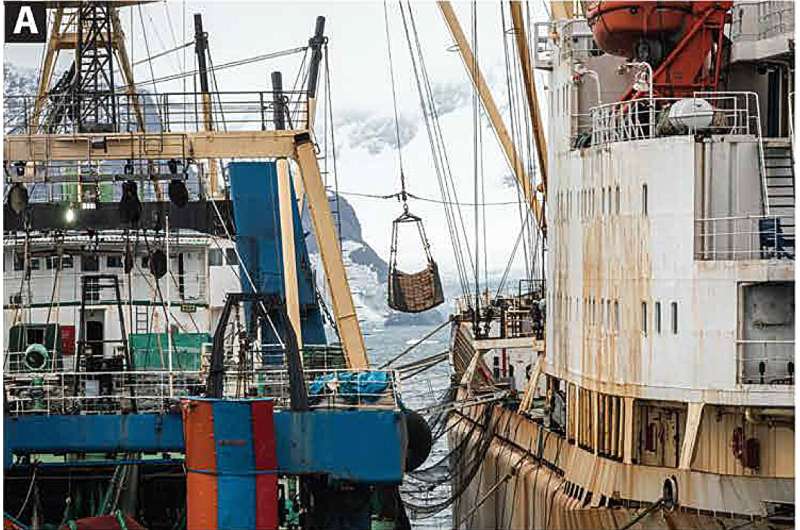

Fish taxies—refrigerated cargo vessels or reefers that function as mobile ports for fishing boats—are frequently described as weak links in the traceability of the seafood value chain. For the first time, research has identified the owners of all globally used reefers, the flags they use, and the fishing vessels they meet.
The new article, published in Science Advances, shows that only 324 owners are responsible for all transshipment of fish worldwide, with China, Russia and Greece playing a significant role. “A major step for more transparency,” says lead author Frida Bengtsson of the Stockholm Resilience Center at Stockholm University.
Refrigerated cargo vessels— or “reefers”—play a significant role in the seafood industry. For instance, nearly a third of global tuna catch (worth US$10.4 billion) is transhipped annually.
Transshipment, the transfer of catches but also people, spare parts and fuel between a fishing vessel and a reefer, has been repeatedly described as opaque and associated with illegal activities, as it can enable the transfer of illegally caught species or obscure the origin of seafood.
Fishing practices at sea used to be out of sight and out of mind, but recent advancements in the collection and sharing of satellite data at the vessel level mean that researchers and the public can now see where vessels operate. A missing piece, however, has been knowing who owns the reefer vessels used in the transshipment of seafood.
“Understanding who the beneficial owner of a vessel is provides new leverage and opportunity for improved governance and oversight of this practice,” explains Frida Bengtsson, the study’s lead author.
In this study, researchers from the Stockholm Resilience Center, the Stanford Center for Ocean Solutions and the University of British Columbia have identified 569 reefers currently in use in the fishing industry and their 324 beneficial owners.
Just 10 of these owners account for almost a quarter of all transshipment events globally. Considering the volumes of seafood that are transshipped, this is a surprisingly low and very manageable number of actors, explains Frida Bengtsson:
“If we work with these key actors and get them to improve their operations, we could quickly improve the traceability and sustainability of seafood.”
The new research has also mapped where in the ocean reefer owners operate their vessels, the gear used by the fishing vessels they meet, and the flags involved.
All this data can now be freely accessed and visualized using an online tool. This unprecedented transparency can become a key tool for NGOs, insurance companies, and financial actors interested in creating stronger incentives for sustainable behaviors at sea.
More information:
Frida Bengtsson, Who owns reefer vessels? Uncovering the ecosystem of transshipment in fisheries, Science Advances (2024). DOI: 10.1126/sciadv.adn3874. www.science.org/doi/10.1126/sciadv.adn3874
Provided by
Stockholm Resilience Centre
Citation:
New study reveals key players in global transshipment, boosting seafood transparency (2024, October 11)
retrieved 11 October 2024
from https://phys.org/news/2024-10-reveals-key-players-global-transshipment.html
This document is subject to copyright. Apart from any fair dealing for the purpose of private study or research, no
part may be reproduced without the written permission. The content is provided for information purposes only.